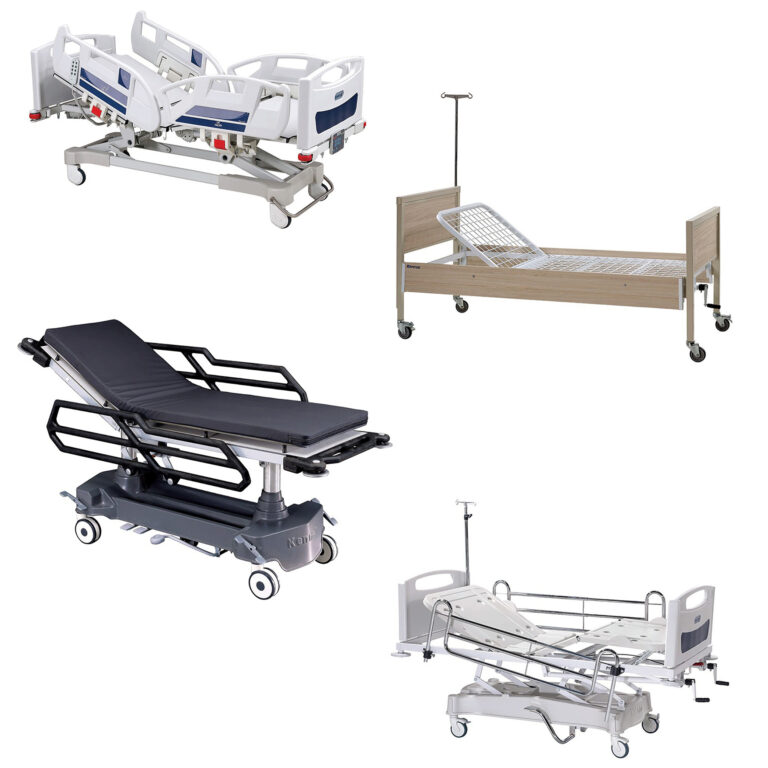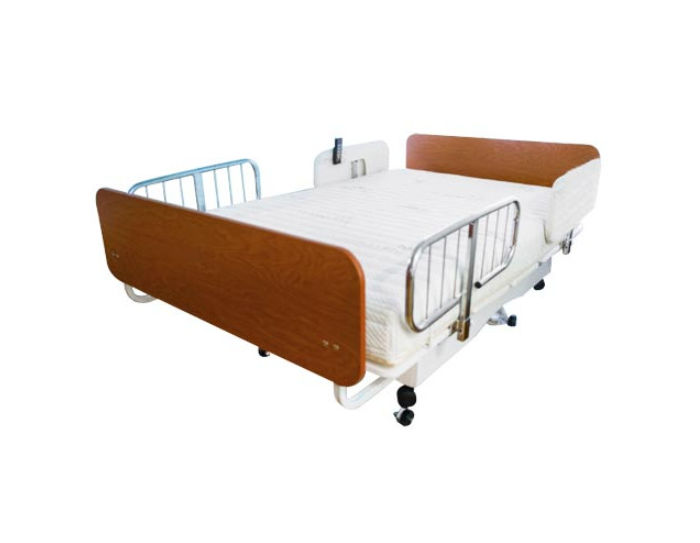4 Easy Facts About Hospital Beds For Home Use Described
4 Easy Facts About Hospital Beds For Home Use Described
Blog Article
Hospital Beds For Home Use - Truths
Table of ContentsTop Guidelines Of Hospital Beds For Home Use8 Easy Facts About Hospital Beds For Home Use ExplainedGetting My Hospital Beds For Home Use To WorkLittle Known Questions About Hospital Beds For Home Use.Hospital Beds For Home Use for BeginnersAn Unbiased View of Hospital Beds For Home UseSome Of Hospital Beds For Home Use
Next off, we will discover the features, utilizes, and Pros and Disadvantages of each kind of hospital bed in deepness. A manual healthcare facility bed is the most basic kind of medical facility bed, and all change functions are accomplished via a hand-cranked device.These hand-cranked devices are normally set up at the foot or side of the bed, and the caregiver or patient can change the elevation or tilt angle of the bed by drinking the manage. Since no electrical parts are needed, are typically more affordable than electrical health center beds, ideal for medical establishments or families with restricted spending plans.
Rumored Buzz on Hospital Beds For Home Use
For patients that require to readjust their stance or elevation frequently, hands-on beds may not be practical enough because each modification requires manual operation. If the bed needs to be adjusted frequently, nursing staff may require to invest even more physical toughness to run the hand-cranked gadget - hospital beds for home use. Guidebook beds are typically appropriate for clients in the recovery period or occasions with reduced nursing requirements
Normally, the modification of the back and legs is controlled by electrical motors, while the overall height adjustment still requires to be done by hand. The function of this design is to reduce costs and power usage while preserving high functional comfort. Contrasted with manual medical facility beds, semi-electric healthcare facility beds are easier in adjusting the back and legs, particularly for clients who require to change their position regularly.
Given that only some functions depend on electricity, semi-electric health center beds eat less power throughout use. Considering that the overall elevation still needs to be changed manually, it may not be as convenient as fully electrical health center beds for people that need to change the bed elevation often. Compared with hands-on health center beds, semi-electric medical facility beds are slightly much more complicated to run, requiring customers to master the combination of electrical and manual procedures.
Electric health center beds have high adjustment accuracy and can be precisely adapted to a details angle and height according to the requirements of people to offer the most comfortable assistance. All-electric medical facility beds are usually equipped with a selection of additional functions, such as built-in ranges, mattress stress change, and so on, to meet the special requirements of different clients.
The Ultimate Guide To Hospital Beds For Home Use
A reduced bed is a specially developed health center bed that can be adapted to a really reduced degree, normally only a couple of inches from the ground. The objective of this style is to reduce the threat of people dropping from the bed, particularly for clients who are at threat of falling, such as the senior or people with restricted movement.

The Ultimate Guide To Hospital Beds For Home Use
offer a treatment atmosphere suitable for kids's elevation and physique, raising the comfort and security of youngsters. Some pediatric beds are likewise equipped with brightly colored bed rails or animation decorations to minimize the anxiety of children in the hospital you could look here atmosphere. For youngsters that need to remain in bed for a lengthy time, pediatric beds are typically furnished with anti-bedsore bed mattress, flexible bed rails and various other functions to provide comprehensive treatment assistance.
The shipment bed is also furnished with postpartum healing functions, such as bed mattress modification, bed home heating, and so on, to help moms recoup much faster. The intensive care bed (ICU Bed) is created for the extensive treatment system (ICU) and has thorough tracking and nursing features. This kind of bed is generally outfitted with user interfaces for a selection of surveillance tools, which can monitor the person's vital check in actual time, such as heart price, high blood pressure, respiration, and so on.
The Basic Principles Of Hospital Beds For Home Use
The extensive care bed has a fully electric adjustment function, which can rapidly readjust the angle and setting of the bed to satisfy the requirements of different treatments and treatment. The style of ICU bed takes into consideration the requirement of rescue operation. The bed can be quickly adjusted to the most ideal rescue position and accept using rescue equipment.
It can properly separate individuals from the outdoors and decrease the threat of infection transmission. Isolation beds are normally equipped with unique bed drapes or sealing covers and linked to air purification systems to maintain the air around the bed clean. Seclusion beds are specifically developed to stop the spread of microorganisms from infectious people and protect the security of various other clients and clinical staff.
Seclusion beds are outfitted with air filtration systems that can filter microorganisms and particle matter in the air to maintain the air around the bed tidy. Can also be adjusted to various placements.
The Ultimate Guide To Hospital Beds For Home Use
Broader and stronger than a common bed. Overweight, obesity, person sizeDesigned for people at threat of click for more info falling out of bed. Reduced to the ground than a typical bed. Individual falls, bed heightDesigned for youngsters. Smaller sized in size than a typical bed. Pediatric medicines, child-sized equipmentUsed during giving birth. Furnished with features such as braces and a headrest.

In a medical care setup, selecting the right bed can not only improve the efficiency of treatment, but also dramatically boost person convenience and safety and security. By recognizing the kinds and usages of these beds, health care facilities and family caretakers can much better sustain and care for their patients.
Little Known Questions About Hospital Beds For Home Use.
HomeCare Healthcare Facility Beds, a department of DiaMedical United States, is dedicated to offering complete transparency for its consumers. Patients can be bewildered by the various options in long-term care products, and HomeCare Health center Beds is committed to enhancing this process, while guaranteeing customers obtain the info and support they require.
Medicare Component B (Medical Insurance) covers hospital beds as durable clinical tools (DME) that your medical professional suggests for use in your home. After you satisfy the Part B deductible you pay 20% of the Medicare-approved quantity (if your distributor approves project). Medicare pays for various type of DME in different ways.

Report this page